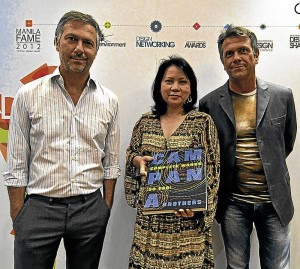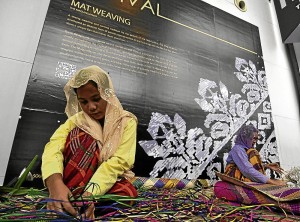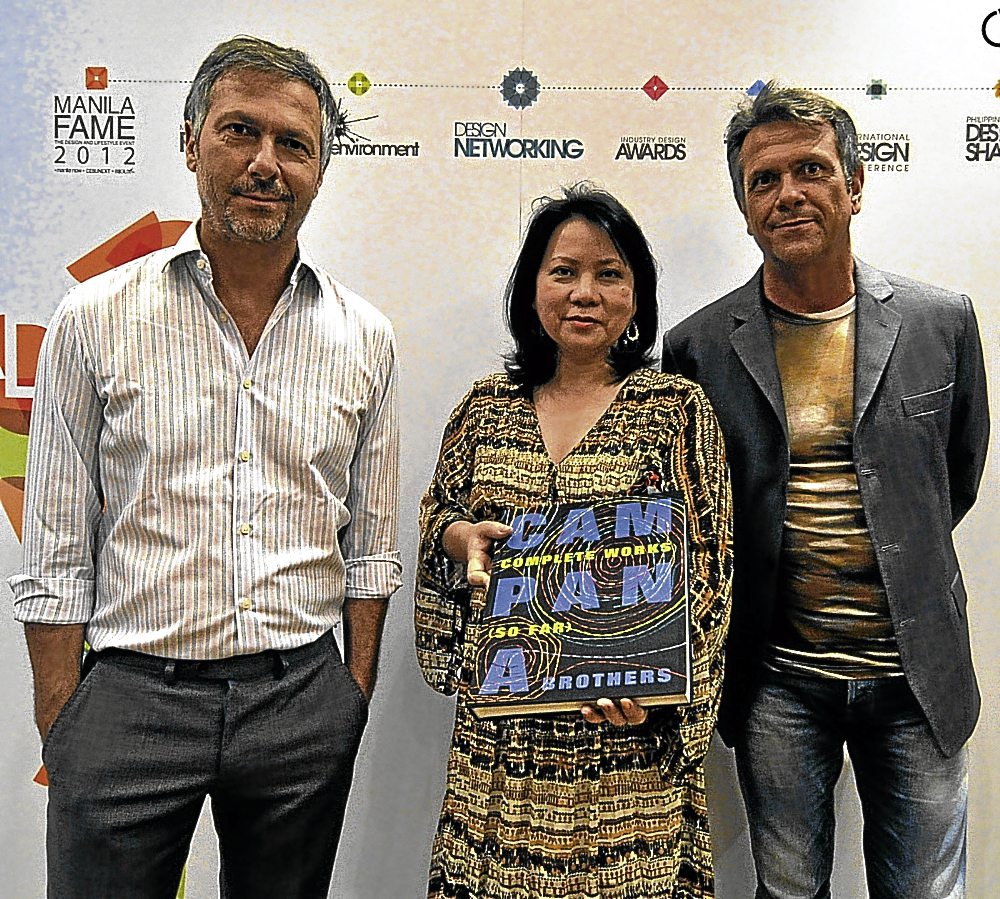
World-famous Brazilian chair designers Humberto and Fernando Campana visited the Philippines as Manila FAME’s special guests last week.
Known for designing and redesigning chairs made from all sorts of materials, from cute stuffed toys to utilitarian ropes, the Sao Paolo-based brothers, the first Brazilian artists to exhibit at the Museum of Modern Art in New York and who are popularly known for designing plastic shoes for the Australia-based shoe company Melissa, shared their thoughts, including their impressions of the vibrant Philippine design scene, in an exclusive interview with Inquirer Lifestyle.
“This isn’t only our first time to visit Manila. It’s actually our first time to visit the Philippines,” Humberto said at a cocktail party in their honor at the Diamond Hotel.
“But I’ve always been drawn by the crafts you have here. I’ve read a great deal about the design scene here from European publications. They’re starting to get known also in Brazil.”
They were able to visit factories in Metro Manila. (Their itinerary didn’t include Cebu.)
“The quantity of materials you have and the way you manipulate them are fantastic,” said Humberto. “This is important on a global scale because crafts are slowly coming back.”

Humberto is himself more into actual manipulation of materials to produce finished products, while Fernando, a trained architect, loves to draw, make projections and plot directions.
“I love to touch things and see how far I can manipulate them,” said Humberto. “The ‘slow’ design is the way to go. People can only take so much of mass production.”
Fernando was also delighted with new products and finishes showcased in the four-day international fair. He didn’t expect such products and possibilities existed. Brazil has a limited range of materials.
Even their traditional crafts aren’t as “sophisticated” as the ones they saw at Manila FAME’s so-called “creation stations,” featuring artisans engaged in actual “heritage” crafts such as wood shavings, filigree, paper cutouts, mat weaving, embroidery and macramé.
Humanization in production
“Humberto and I have always advanced humanization in production,” Fernando said.
“What you have here is perfect, as the world reacquires a taste for more labor-intensive production processes and techniques.”

Since they’re familiar with using rope, one of the first things that caught Humberto’s eye was abaca. Such a material doesn’t exist in Brazil. They promised to study the material and perhaps design a chair in the near future made from it.
On what makes a chair interesting, Humberto, after a long pause, thinks that it should be, “like a good movie,” able to evoke emotions by telling people bits and pieces of its makers’ culture, history or points of view.

Their teddy bear chair, for instance, came about while the brothers were in search of new materials. Then it hit Fernando after he saw a couple of street vendors carrying teddy bears on their heads. They lost no time devising a way of translating the rather whimsical material into a new form of upholstery.
“But even mass-produced items can evoke emotions and tell a story,” said Humberto.
Since their makers’ history and culture come into play in their production, every chair should be different from one group to another. But the basics of what makes a chair good should always be there.
It’s important to be aware of trends, but designing furniture isn’t all about following trends. Most of the time, it’s better to be inspired by one’s roots or traditions. Exposure is also important if the designer is to update designs inspired by his roots to something more responsive for today’s users.
“But being limited to trends isn’t very good,” said Humberto. “You get to produce homogenized stuff when you limit yourself to trends. You would never stand out and be recognized. In designing, I think it’s also important to follow what your heart says.”









































